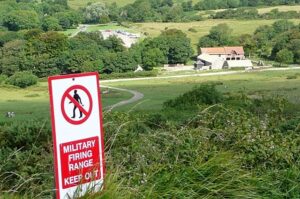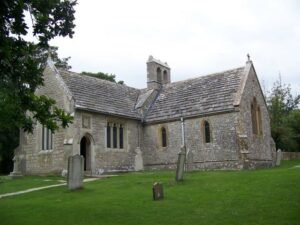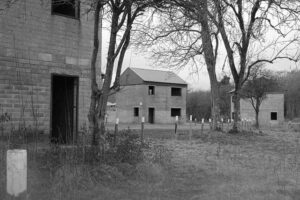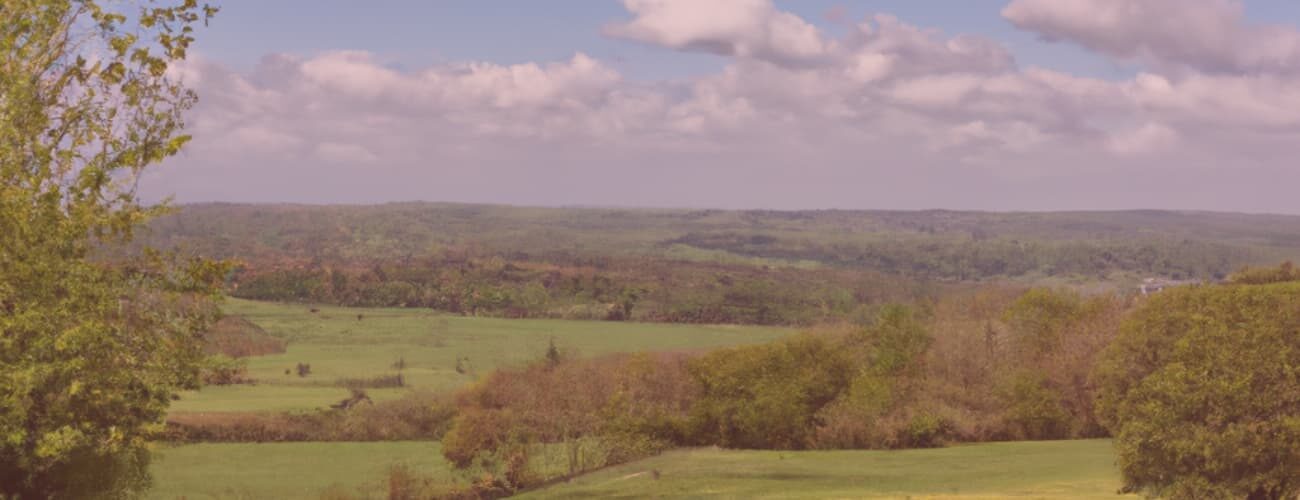•
(Caution: Contains spoilers for Episode: S19E01: The Village That Rose From the Dead)
Diesen Beitrag gibt es auch auf Deutsch.
•
A curtain opens to reveal a room with nine people. All of them are dressed in 1940s style. Almost all of them are sitting at three tables, only the older woman who opened the curtain is standing in front of them, just finishing her presentation about a living museum in Little Auburn. It is Sylvia Lennard.
The audience applauds her. Roderick Craven, the landlord of Great Auburn and heir to Little Auburn, thanks her. 75 years ago, Little Auburn became a military base and fell into disrepair after the war, becoming a ghost village. The residents founded Great Auburn not far away, but tomorrow the army will return the land to the Craven family. In return, the landlord wants to support a project. There are three groups with very different ideas, including Sylvia Lennard’s living museum.
Abandoned

Like a few other villages in England, Little Auburn was abandoned for the purposes of World War 2. Here, as there, the inhabitants built close to a new village. But unlike the other ghost villages, the inhabitants of Great Auburn were allowed to return to their home or the home of their ancestors in 2016.
The film location, Little Missenden in Buckinghamshire is not and was not a ghost village. It existed as a settlement in Anglo-Saxon times, so it is no wonder that it was mentioned in the Domesday Book.
But back to the 1940s: In preparation for the Allied assault on Normandy, several villages were “cleared” of civilians and used as training grounds for the British Army and U.S. forces: For the Stanford Battle Area in Norfolk, six villages were resettled: Buckenham Tofts, West Tufts, Langford, Stanford, Sturston, Tottington.
They were complemented by Imber in Wiltshire, and Tyneham in Dorset.. The last two are now something like open-air museums where visitors can walk around.The former residents are also allowed to visit, of course, but not live in them.
Tyneham, Dorset
A village with 102 houses, a church and a farm. At the end of November 1943, the 225 inhabitants of Tyneham received the message that they had to vacate their village within four weeks.
They were not granted a Christmas at home. The Bond family, who owned most of the village, received £30,000 compensation (nearly £1,000,000 today). The inhabitants received a little for what they had grown. They received nothing for the houses, which the British Army promised to return after the war. The British Army used the village and the surrounding 7,500 hectares to train troops and practice manoeuvres.
“ The Government appreciate that this is no small sacrifice which you are asked to make. But they are sure that you will give this further help towards winning the war with a good heart.”
The last inhabitants left on 17 December 1943 in the belief that the government would keep its promise.

A broken promise.
There were several attempts by the locals to change the military’s mind – unsuccessfully. Tyneham became a ghost village.
The Army placed a Compulsory Purchase Order on the land in 1947, which meant that no one could return. Since then, it has been owned by the Ministry of Defence and is used for training on weekdays. At weekends, it is a tourist attraction, with people walking through abandoned alleys and the remains of old houses.
In 2008 Tyneham Farm was reopened to the public and is being restored. The 13th century schoolhouse and church are preserved as museums. A message still hangs on the church which Evelyn Bond posted here in December 1943: “Please treat the church and houses with care; we have given up our homes where many of us lived for generations to help win the war to keep men free. We shall return one day and thank you for treating the village kindly.“
Imber, Wiltshire

Imber had a similar fate. An ancient village with ancient trackways leading to the village.
As in Tynedale, there were settlements here in Roman and Anglo-Saxon times and also a mention of the village in the Domesday Book.
Unlike Tyneham, however, the government had its finger on the village before 1943. Already since the late 19th century, the British War Office had acquired more and more of Imber to establish drill facilities. By 1940 they owned everything except the school, church and pub.
As in Tyneham, the British Army informed the British Army in November 1943 that all residents had to temporarily leave the village. Also until 17 December. Also no Christmas at home. Some of them must have thought “Of all things!” when they learned that US troops were to use the area for training and preparation. Of all things because the “Imber Friendly Fire Incident” was only a few months ago. At that time, during a rehearsal for a tactical demonstration of AirPower with Spitfires and Hurricanes, a US pilot mistook civilians for dummies, fired into the crowd and killed 25 people.
Inhabitants: Zero.
Imber is now also a ghost village because like Tyneham it was a broken promise of the British Army. No one ever returned to Imber and today it is tourists who are allowed to walk through the village at certain times. Every attempt by the inhabitants to be allowed to move back into the village has so far been unsuccessful.
After the war, the village was used for urban environment training and new empty buildings were even constructed to that end, among other things as preparation for soldiers to serve in Northern Ireland.
Completely absurd that Imber is still counted in the census records for the UK. With the number 0 as entry.
Read more about Midsomer Murders & History
The Chronology of Midsomer County by Year or by Episodes
Deep Dives into Midsomer & History
This is an independent, non-commercial project. I am not connected to Bentley Productions, ITV or the actors.

Literature
- Ledsom, Alex: U.K. Travel. The Secret Ghost Village Forcibly Abandoned in 1943. In: Forbes (03/11/2022).
- NN: Tyneham is a ghost village on the Isle of Purbeck, Dorset. In: In Dorset.
- NN: Tyneham. Abandoned Village. In: Taste.
- Noyen, Maria: I explored an English ghost town that was evacuated in World War II, and I couldn’t help but feel heartbroken for the 225 villagers who lost their homes. In: Insider (04/09/2022).
- NN: Imber: An English Village abandoned in World War II. In: World Abandoned.
- Nash, Sarah: Frozen in time. The English ghost villages of D-Day. In: Slow Travel.
First published on MidsomerMurdersHistory.org on 17 December 2023.
Updated on 15 June 2025.


4 thoughts on “Ghost Villages in World War 2”